I'm back from a visit to Elisa Alaluusua's exhibition at the Art Space Gallery, not far down the road in Islington. The show features videos of four artists talking about their sketchbooks undertaken as part of her PhD research into sketchbooks. The camera is generally trained on the books as the pages are turned and the artist talks about what each contains and their working processes. (In the circular way that these things can work, I interviewed Alaluusua for my own research into sketchbooks.)
Some artists, as we know, discard their sketchbooks when they are filled: by that point they are considered to have fulfilled their purpose. I'm not one of those people. I have shoe boxes stuffed with sketchbooks on the top of book shelves in a way that would cause sleepless nights for the health and safety executive. Closer at hand and on a lower, safer level are more recently completed and current sketchbooks.
My current A5 sketchbook (shown above) is nearly full: a few empty double pages remain at the end. Seeing Alaluusua's videos makes me wonder what I would say about it, should her camera be peering over my shoulder. The book covers the months following the end of October 2017: drawings done wherever I find myself with time to draw, but also some done on a few gatherings meeting up to draw with other artists, and some done for an NBC News report. There's nothing very special about the sketchbook: it's usual in that some drawings work and some don't, some surprised me in how they turned out, and some disappoint, some I immediately disliked and am now keener on, and some are declining in my estimation. As if that matters.
What makes it stand out, for me, anyway, is that it is one of four made by my younger daughter and given to me as a Christmas present. There's a note from her inside the front cover to mark this. It's what helps me to mark this one out from all the others I have done over 30-odd years.
Usually I show an image or two from a sketchbook, but here I've scanned and shared the lot. I've included scans of the blank pages. I found in my research that digitised sketchbooks that missed out the apparently untouched folios seemed to be keeping secrets. Even the blank pages give something away. The dates can be a giveaway too: why the chronological gaps? What was going on then that stopped me drawing more?
The caption for each is on the reverse of the drawing, ie, on the following double page.











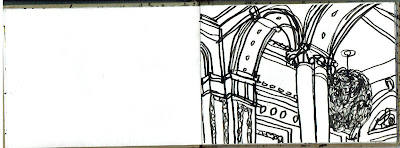










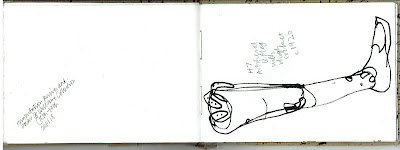




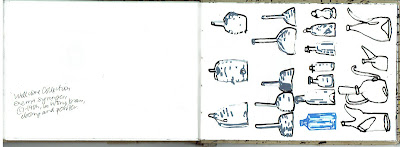





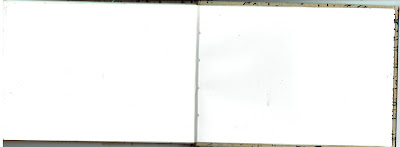

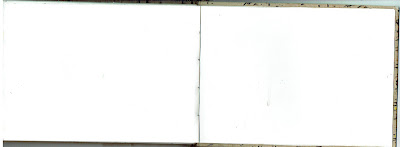


4 comments:
It's so special that your daughter made the book! I think artists who toss their sketchbooks do not think of their sketchbooks in the same way as we do. To them, they are just "rough drafts," the way writers think of drafts before the final prodcut. To us (or at least to me), the sketchbooks IS the product.
- Tina
Thanks Tina. She made another three, so this is the last of the bunch. No, I won't be ditching these: but I like the way that there are many ways of using and treating a sketchbook.
Hi James - I see you put the captions on the back of the drawings to which they relate.
An interesting choice. Does that mean that perhaps one day you are going to remove that page, and so you need the caption to be attached to the drawing?
I made the choice to put my captions and descriptions and stuff on the facing page. So that means that it's on the back of a totally unrelated drawing. I have often wondered if this is a good idea or not and what other people do.
So thanks for sharing the total pictures of your sketch books. It's also interesting to see the blanks - and somewhat liberating to realise that you don't have the need to fill every page, and also that the drawings are of different styles and subjects and stages of completion.
Many thanks for the fascinating post.
Hi. Yes, I used to put the caption on the facing page as well, but then I had an exhibition (at Wolseley Fine Arts in 1996) which involved removing drawings from my sketchbooks for framing, and so suddenly the captions no longer made sense. I do still occasionally remove images from the books for different reasons, so I keep to the back-of-the-page system.
(I do think that if a page is removed, it's a good idea to insert a copy into the book with a note as to where the original went. This keeps the book's narrative thread alive.)
As for the blank pages I've shown in this post, they aren't blank any more. I may add another post to show what I did with them - not that they are particularly noteworthy, but just to bring things up to date. I do enjoy what appears to be a blank page though: they very often give away at least something.
Post a Comment